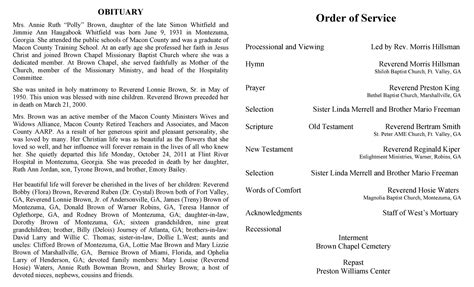The 2014 action thriller “3 Days to Kill” brings together a unique blend of high-stakes espionage, family drama, and dark humor, setting it apart from other films in the genre. Directed by McG and written by Adi Hasak and Luc Besson, the movie offers a complex web of plot twists and character developments that keep viewers engaged.
At the heart of the film is Ethan Renner, played by Kevin Costner, a veteran CIA operative who has spent his career in the shadows, taking on high-risk missions without hesitation. However, when Ethan is diagnosed with a terminal illness, he decides it’s time to reconnect with his estranged daughter, Zooey, played by Hailee Steinfeld, and ex-wife, Christine, played by Connie Nielsen. This personal subplot adds a layer of depth to the story, exploring themes of family, redemption, and the consequences of a life spent in service to one’s country.
The action unfolds against the backdrop of Ethan’s attempts to reconcile his past and present. He’s approached by a mysterious CIA agent, Vivi Delay, played by Amber Heard, who offers him an experimental drug that could potentially save his life in exchange for one final mission: to eliminate a notorious terrorist known as “The Wolf.” This setup allows for a blend of intense action sequences and quieter moments of character reflection, showcasing the versatility of both the cast and the director.
One of the standout elements of “3 Days to Kill” is its ability to balance light-hearted moments with the darker aspects of its storyline. The film often uses humor to break the tension, particularly in the interactions between Ethan and his daughter, making their relationship feel genuine and heartfelt. This contrast between action and emotion adds layers to the narrative, preventing it from feeling one-dimensional.
The film’s technical aspects, including cinematography and editing, play a crucial role in enhancing the viewing experience. The use of vibrant colors against the often-gritty backdrop of international espionage adds visual appeal, while the pacing ensures that the film moves at a brisk speed, rarely giving the audience a chance to catch their breath between action sequences and dramatic reveals.
In terms of performances, Kevin Costner brings a sense of gravitas and nuance to the role of Ethan Renner, making his character’s journey from a hardened operative to a man seeking redemption both believable and compelling. The supporting cast, including Hailee Steinfeld and Connie Nielsen, delivers solid performances that flesh out the Renner family’s dynamics and emotional arcs.
Despite its engaging storyline and performances, “3 Days to Kill” received mixed reviews from critics, with some praising its unique blend of action and drama, while others found it predictable and lacking in originality. However, for fans of the action thriller genre, the film offers enough twists and turns to keep it entertaining, along with a compelling central performance from Kevin Costner.
Behind the Scenes: The Making of “3 Days to Kill”
The production of “3 Days to Kill” involved a complex process of script development, location scouting, and filming in various international locations, including France and Italy. The film’s director, McG, is known for his work on high-energy projects, and his involvement in “3 Days to Kill” brought a unique visual style and pacing to the film. The cast underwent extensive training to prepare for their roles, particularly Kevin Costner, who performed many of his own stunts to add authenticity to the action sequences.
Historical Context: The Evolution of Action Films
“3 Days to Kill” is part of a long lineage of action films that have evolved over the decades, from classic spy movies to modern thrillers. The genre has seen a significant shift towards more complex characters and storylines, reflecting the changing tastes of audiences and the influence of global events on storytelling. Films like “3 Days to Kill” represent a contemporary take on the action thriller, incorporating elements of family drama and personal redemption alongside high-stakes action.
Future Trends in Action Cinema
The future of action cinema is likely to see even more emphasis on character-driven stories and complex moral themes, as well as the incorporation of advanced technologies in both filming and storytelling. The use of CGI, for example, continues to enhance action sequences, making them more visually stunning and believable. Furthermore, the globalization of the film industry means that action movies will draw inspiration from a diverse range of cultures and settings, promising a richer and more varied cinematic landscape for fans of the genre.
- Start by exploring the filmographies of actors known for their work in action movies, such as Liam Neeson or Tom Cruise.
- Look into films directed by known action directors, such as the Bourne series by Paul Greengrass.
- Check out international action films, which often bring a unique perspective and style to the genre.
- Stay updated with the latest releases and reviews to catch new action thrillers as they come out.
Conclusion
“3 Days to Kill” stands as a testament to the enduring appeal of the action thriller genre, with its blend of high-stakes espionage, family drama, and personal redemption. While it may follow familiar tropes, the film’s execution, coupled with strong performances from its cast, makes it a compelling watch. As the action cinema landscape continues to evolve, incorporating more complex characters and global perspectives, fans of the genre have much to look forward to in the years to come.
What makes “3 Days to Kill” unique within the action thriller genre?
+The film’s unique blend of action, espionage, and family drama, along with its exploration of themes such as redemption and the personal costs of a life in service, sets it apart from other films in the genre.
Who are the main cast members of “3 Days to Kill”?
+The film stars Kevin Costner, Hailee Steinfeld, and Connie Nielsen, among others, with notable performances that bring depth to the story.
What themes does “3 Days to Kill” explore?
+The film explores several themes, including the importance of family, personal redemption, and the consequences of a life spent in dangerous professions.



